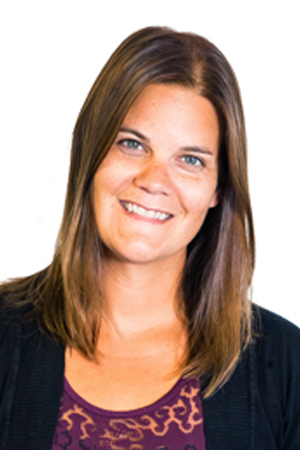“I grew up in a rural place, 35 kids in my senior class. So, this is always something that I’ve been really passionate about as we think about what are the place-based opportunities so that rural people can stay and thrive in their communities,” says Leslie Daugherty, Ed.D., senior director of design programs at Education Design Lab (the Lab).
This from Daugherty as the Lab announces the launch of its new Rural College Design and Data Academy. Building on its BRIDGES Rural initiative, the Lab is looking to its new cohort of 13 rural higher ed institutions across 11 states to expand on opportunity pathway insights in their communities – including rural earn-and-learn models, micro-communities, community ecosystem alignment, grow-your-own pathways, and data culture and capacity.

In its announcement, the Lab notes, “Rural-serving institutions often do not have the same access to state funding, infrastructure, and human resources as other institutions… Rural communities also account for 75% of people living in education deserts, or areas with one or fewer higher education institutions within 25 miles.”
Daugherty says, “There’s this feeling that you get to choose whether you’re going to go to school or work, and that’s not a choice. Not for those 75%.
“So, it’s trying to find those models that can recognize that and redesign systems that are focused on helping people get access to whatever they want – whether it’s short term, whether it’s a doctorate, whatever learning that they want in a way that works with their life.”
Helping Institutions Gain Access to Support
“There are so many amazing opportunities for access to different sorts of grants and opportunities for rural colleges,” says Daugherty.
“But the data requirements to even apply for some of those grants or to evaluate that – there’s just a lack of capacity or understanding. So how can we think about a different data strategy for rural colleges so that they can open access and have more opportunity to engage in some of those really cool projects that we see suburban and urban counterparts getting all the time.”
The higher ed institutions of the new Academy cohort are:
- Shasta College, California
- Allegany College of Maryland, Maryland
- Coahoma Community College, Mississippi
- Crowder College, Missouri
- Northern Pennsylvania Regional College, Pennsylvania
- Medical University of South Carolina + Orangeburg-Calhoun Technical College, South Carolina
- Motlow State Community College, Tennessee
- Uintah Basin Technical College, Utah
- Spokane Community College + Washington State University – Extension Ferry County, Washington
- Bridge Valley Community and Technical College, West Virginia
- Northcentral Technical College, Wisconsin
Daugherty notes that the cohort members are gathering tomorrow and Thursday in Tullahoma, Tennessee at Motlow State Community College. “We’ll have three team members from every institution to kick off this process of – what is human-centered design, what does it mean to be in a cohort?
“How are we creating our best practices for learning? Then from there, we have bimonthly design sessions where the cohorts come together, talk about what are they seeing within their communities, how are they thinking about building that eventual pilot that they can launch with a group of learners.”
She continues, “We will also have monthly sessions just with the institutions themselves, to talk about the design process, to talk about the data component. That’s really important because all the institutions will be joining the Lab’s Data Collaborative for a Skills-based Economy (Data Collab), which is really focused on better understanding how these short-term, non-degree pathways, what is the long-term impact on labor and wage?
Pilot Launches in 2025
“Spring 2025 is when we are hoping that their pilots launch,” says Daugherty. “Once we have something launched, we will spend the rest of that spring, summer, and fall really trying to understand and evaluate what’s working and not working for learners. So, we are scheduled to be done with this piece of work in October of 2025.”
Each cohort member has been awarded implementation grants of up to $50,000, funded by Ascendium Education Group.
Homegrown Talent
“We know that there’s higher high school graduation rates in rural, but lower college access,” says Daugherty. “So how do we help shape the narrative that these community colleges or the extension center or whatever that place is, is the place for them to explore whatever it is.
“Rural communities are strong, and they always have that sense of place in community. So how do you build on that asset?”
She adds that local employers also need to be thinking about opportunities for growth, “There’s enough people there that they can be talking to, but they just haven’t tapped into that population of learners. So, it’s finding them, finding what is the messaging, what excites them, what are those careers – and getting that population connected.
“[People] want to live close to family. ‘My family has lived here for six generations. This is home. This is where I live. This is where I want to raise my kids. We want to work here because we want to support this business that has been in this community, and we want to be a part of the community in that way.’”










